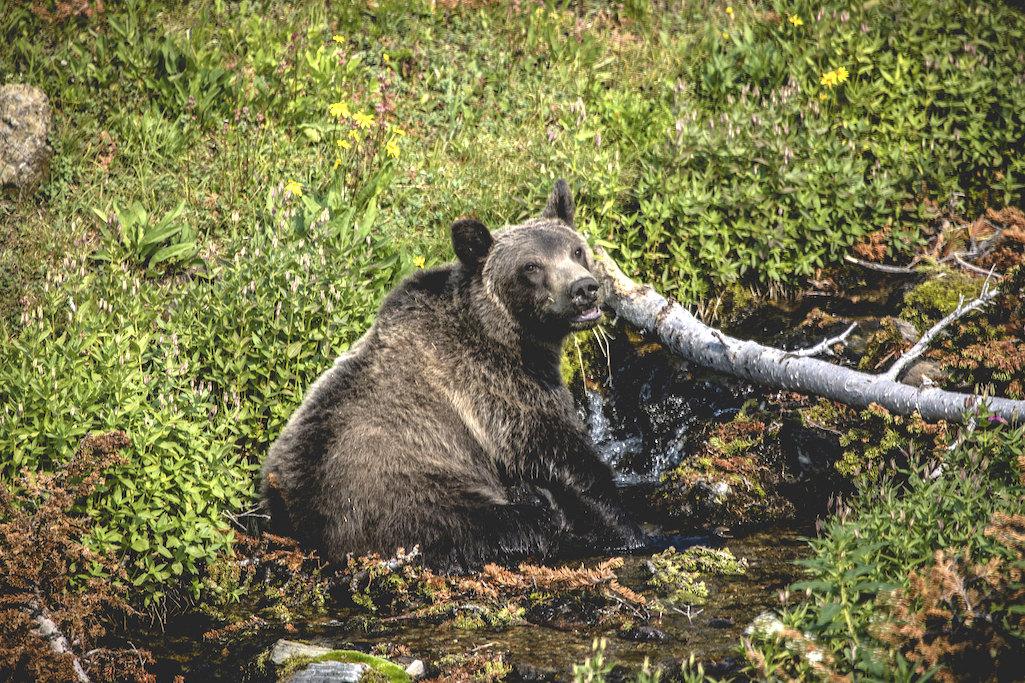
A grizzly bear (not this one) was put down at Glacier National Park after becoming aggressive in search of human foods/NPS file
A grizzly sow, just five years old, was put down in Glacier National Park in Montana after developing a taste for human foods and becoming increasingly aggressive in search of them, according to the National Park Service.
In late June the bear was able to grab food off a picnic table in the Many Glacier Campground; park staff would later haze the grizzly out of the campground on two occasions. In mid-July, she charged a family picnicking on the shoreline of Swiftcurrent Lake near the boat launch. The family was able to secure food items; however, the bear successfully obtained beverages that were left cooling in the lake, a park release said Friday.
Park officials made the decision to euthanize the grizzly in coordination with U.S. Fish and Wildlife. On Thursday the grizzly was euthanized near Lake Sherburne. This is the first "food-conditioned" grizzly bear to be euthanized in the park since 2009.
This bear was radio collared in 2019 as part of a grizzly bear population trend study in which the park monitors up to 10 radio collared female grizzly bears. There are an estimated 300 grizzly bears in Glacier National Park. Numerous state and federal agencies work together to manage and recover the grizzly bear population in the Northern Continental Divide Ecosystem, which includes Glacier National Park.
Once a bear receives a human food reward, it can become food-conditioned. Food rewards can include items such as human food, trash, livestock feed, and pet food. Over time, food-conditioned bears may become bold or aggressive in their attempts to obtain human food, as was the case with this bear, the park said. Once a bear has become food-conditioned, hazing and aversive conditioning are unlikely to be successful in reversing this type of behavior. Food-conditioned bears are not relocated due to human safety concerns.
Park visitors can help ensure the future of grizzly bears by taking steps to prevent bears from becoming food conditioned. Do not stop along roadways in the vicinity of bears. Secure all food and garbage. Report all bear sightings to the nearest ranger. It may be cliché; however, more often than not, “a fed bear is a dead bear.”


